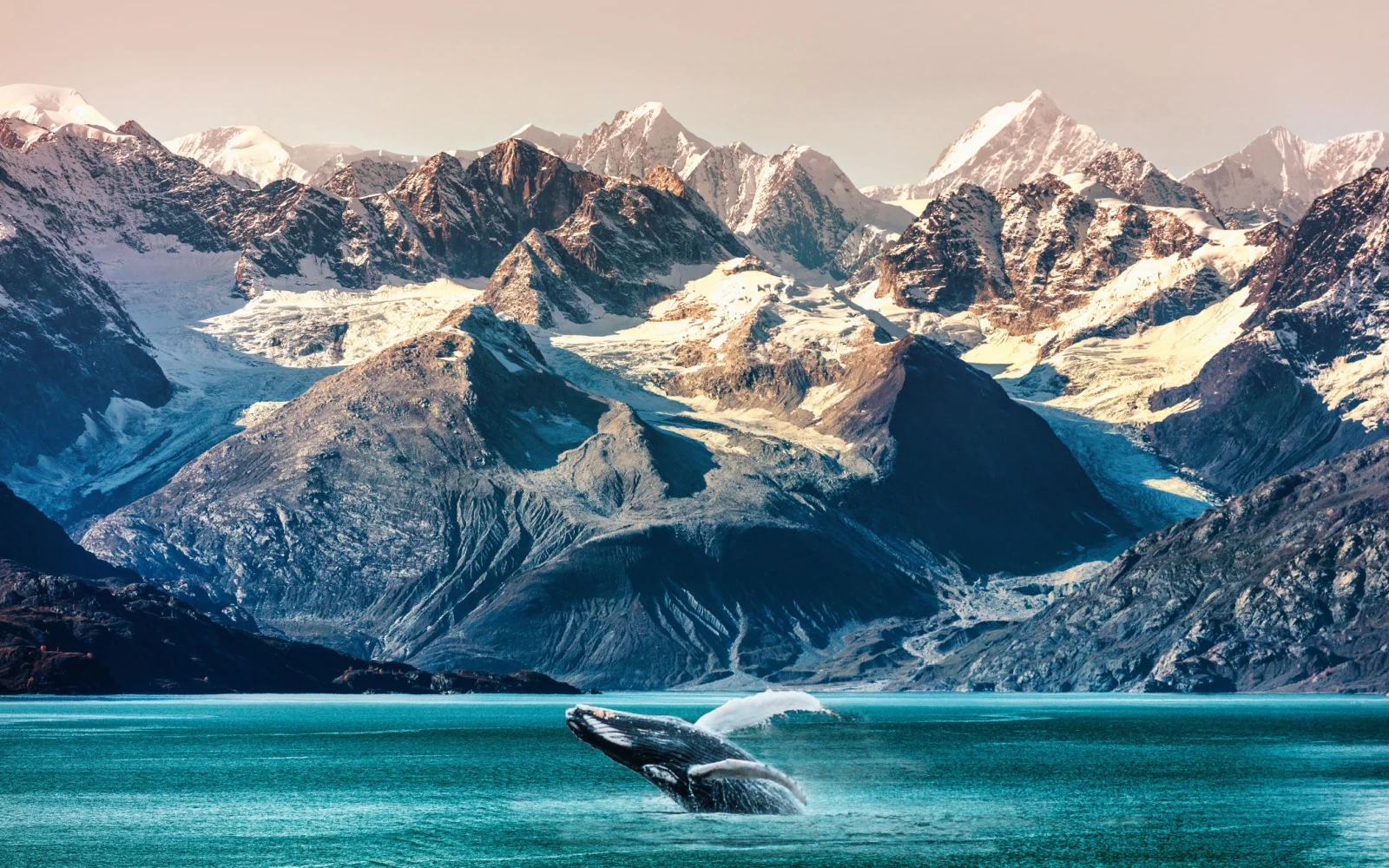What's the best time to visit Alaska?
The best time to visit Alaska is during its delightful summer season, with temperatures ranging from 45 to 70 degrees, making it ideal for exploring its vast landscapes and enjoying extended daylight hours, including the midnight sun. Summer not only makes travel easier, but enables better access to major attractions like Denali National Park.
The state of Alaska is one of the best places to visit in the United States for lovers of nature, because wild landscapes such as these are hard to find elsewhere.
It’s home to many stunning national parks, such as Denali National Park and Preserve, home to the tallest mountain in the United States, and Glacier Bay National Park and Preserve.
There are many wild animals just wandering around Alaska, and you can go on bear-watching excursions, whale-watching boat rides, and more. With all this nature, it’s no surprise that people in Alaska are a bit unique—get to know the local way of life by visiting a city such as Fairbanks, or checking out an Inuit cultural center.
Besides its nature, Alaska is also famous for its wild weather. But don’t worry — we’ll show you the best, least busy, cheapest, and worst times to visit Alaska below; let us be your guide!
The Overall Best Time to Visit Alaska
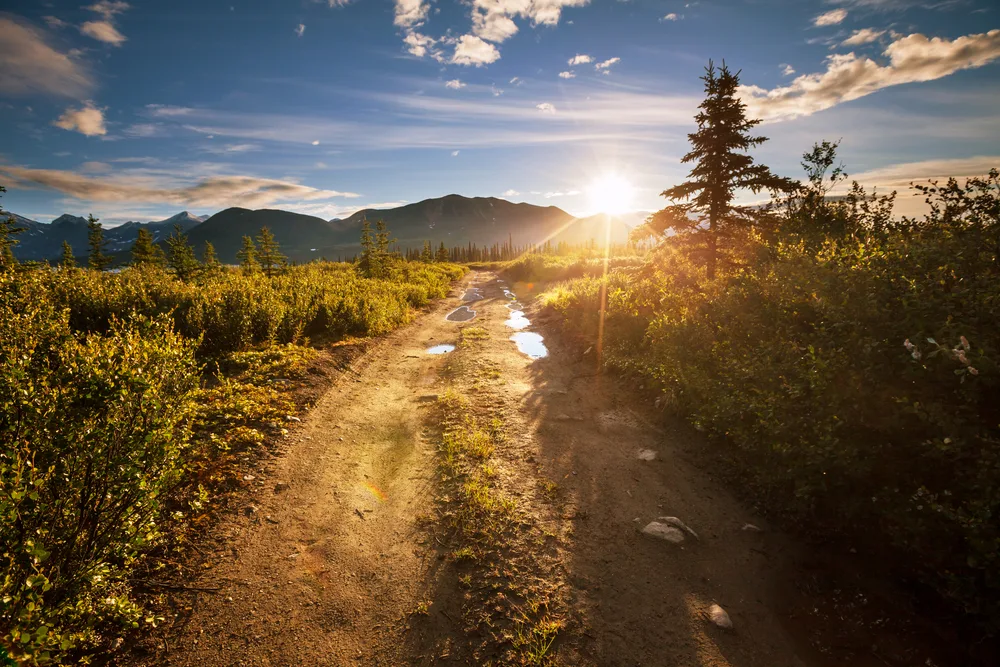
Galyna Andrushko/Shutterstock
The best time to visit Alaska is during the state’s brief but wonderful summer, when the weather is at its best for exploring wherever you go. After all, Alaska’s weather is no joke.
While it has four distinct seasons, winter definitely predominates, stretching through most of the year with its cold and snowy weather. After a long winter, summer comes as a blessed relief.
Summer temperatures are not too hot, around 60-70 degrees in the south and only about 45 degrees close to the Arctic Circle, but they are much more comfortable than during the rest of the year. Another benefit of visiting in the summer is that there is more daylight to see what you want to see.
The area around Juneau receives 18 hours of sunshine in June, while further north, the sun doesn’t set at all in June and July. That means you’ll have more time for hikes without worrying about getting caught outside in the dark, and a rare chance to see the midnight sun.
Thanks to the warmer weather, it is much easier to get around Alaska than during the rest of the year. There is plenty of rain, but no snowstorms that can ground your flight or shut down roads.
Trails in popular parks such as Denali National Park are only fully open in the summer. The popular road trip route the Top of the World Highway is also only open in the summer, from June to late August or early September.
Even the official Alaska state tourism board says that the best time to visit is the summer peak season, which goes from mid-May to mid-September. Many tourism businesses including visitor centers and scenic buses only operate during this time.
Plus, this is the best time for outdoor activities such as bear viewing, hiking, and fishing. Alaskans love to take advantage of the summer by spending as much time as possible outdoors before it starts to get cold, so expect plenty of festivals from berry picking to salmon bakes.
Some of the biggest events of the season are:
- Midnight Sun Festival (Fairbanks, June)
- World Eskimo-Indian Olympics (Fairbanks, July)
- Alaska State Fair (Parker, Alaska)
This is definitely the most popular time to visit Alaska and you’ll encounter crowds at popular sites, but the state is big enough that even in the middle of summer you can find a spot to yourself.
Cheapest Time to Visit Alaska
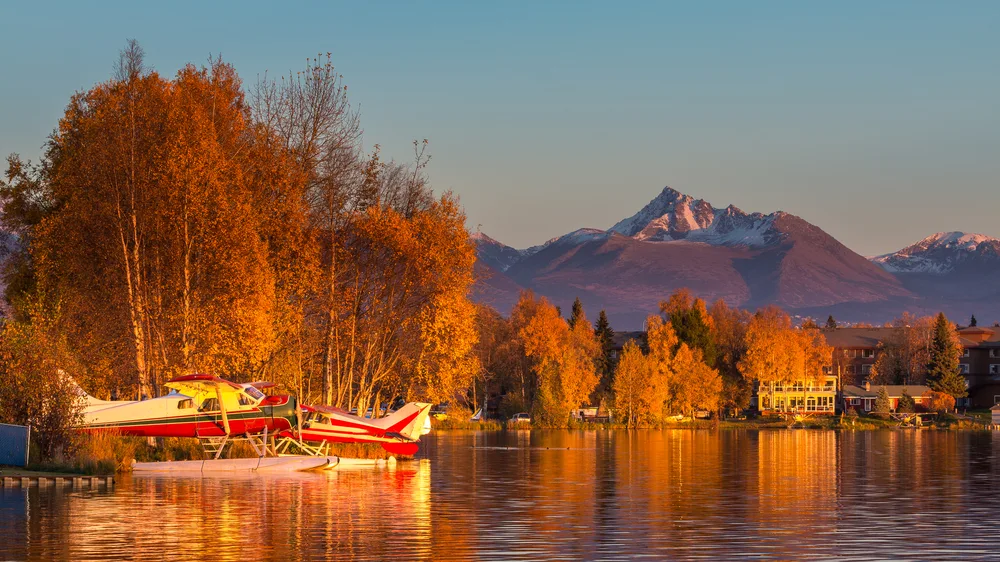
Tomasz Wozniak/Shutterstock
The cheapest time to visit Alaska is during May or September, the beginning and end of high season, when many businesses reduce their rates in response to the smaller crowds.
In May, the weather in Alaska is beginning to warm up but the crowds aren’t here yet. The warmer weather lasts until mid-September, but most tourists head home by the end of August, so there’s less demand for hotel rooms.
These months are technically still part of the high season, so most businesses are open and you have more choices for finding a place within your budget than during the off-season. However, they usually offer discounted rates, especially in September.
You can find hotel rooms for 20-40% off peak prices. Flights to Alaska are also more affordable during these shoulder season months, which is crucial if you’re traveling from elsewhere in the United States. During May and September, the cruise season is still ongoing, but you can find great deals due to lower demand.
According to the official Alaska tourism board, many cruises offer discounts of hundreds of dollars as well as discounts on excursion add-ons during the May or September shoulder months.
Least Busy Time to Visit Alaska
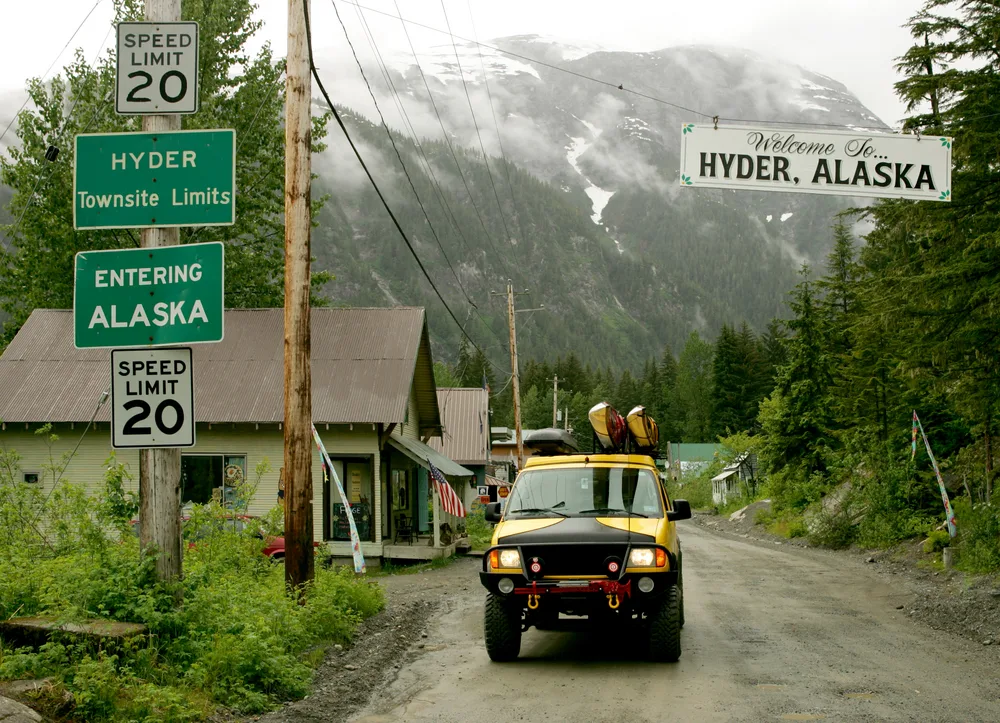
Oksana.perkins/Shutterstock
The least busy time to visit Alaska is in April or October, which mark the transition between the winter and summer seasons. April is one of the quietest months, so many businesses and trails shut down, even those that were open during the winter.
This gives them time to conduct regularly scheduled maintenance in preparation for the busy summer. As a result, you’ll have the fewest options for things to do.
The weather is also unpredictable due to what Alaskans call “break-up season.” The snow and ice melt, meaning that trails turn into messes of mud and litter. Be sure to bring sturdy waterproof boots, and you can enjoy clear skies and trails all to yourself.
October is another transitional month, marking the end of Alaska’s short autumn and the beginning of winter. The beginning of the month still has beautiful fall foliage in the south, but by the end of the month everything has frozen over.
We suggest visiting early to take advantage of the empty yet still-passable trails. Moving on, October marks the tail end of autumn, which is the best season for bear spotting.
From late August until mid-October, bears are at their most active as they go into a feeding frenzy to prepare for winter hibernation. On that note, be sure you keep your distance from these amazing animals, but the chance to spot one in the wild is amazing. The fishing is also great until well into October.
Worst Time to Visit Alaska
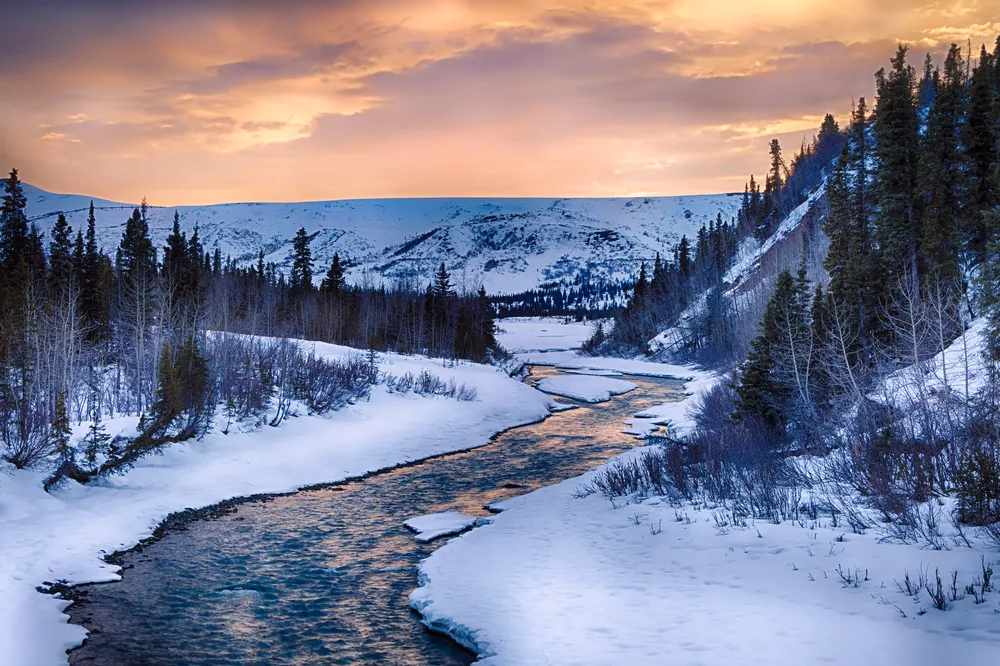
Troutnut/Shutterstock
The worst time to visit Alaska is in the winter, unless you’re very well prepared for the cold weather. The biggest mistake you can make is underestimating the Alaskan winter.
It lasts from late October to early April, and it doesn’t relent at any point in between. In southern Alaska, average daytime temperatures are milder, about 25-32 degrees Fahrenheit. The further north you go, the temperatures are colder.
Average temperatures close to the Arctic rarely go above 15 degrees Fahrenheit in the winter, and record lows of -60 degrees Fahrenheit have been recorded. If you do decide to visit in the winter, you’ll have to adjust your expectations for what to do.
Most hiking trails and scenic road trip routes are impassable due to the snow. And since Alaska only has four highways, getting around takes some additional planning. Many businesses also shut down for this slower season to prepare for summer.
However, you can do special winter activities from December to March that you can’t do during any other time of year, or in any other place. Try skiing, cross-country skiing, snowmobile excursions in Denali National Park, and even dog sledding.
Winter is also the best time to go chasing the Northern Lights. This phenomenon is visible from late August to early April in the far north, but at its peak from late February to late March, when skies are clearest.
Alaskans don’t sit inside all winter or they’d go mad, so expect plenty of events such as the iconic Iditarod Trail Sled Dog Race and the Anchorage Fur Rendezvous.
Frequently Asked Questions
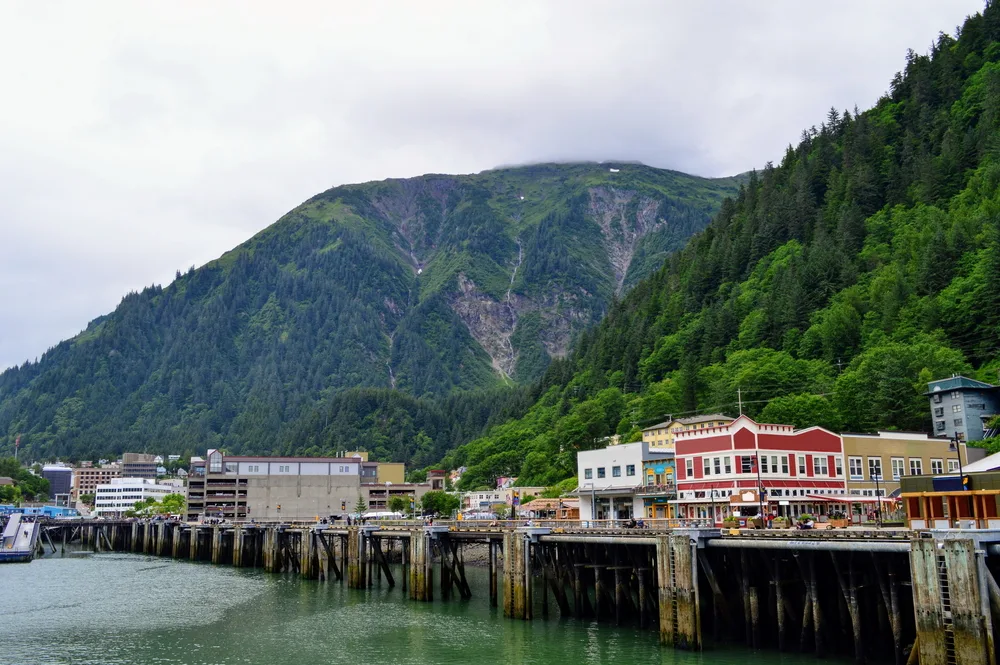
Divanov/Shutterstock
Here are some of the most common questions to ask that’ll help you pick the best time to visit Alaska:
What are the best months to go to Alaska?
The best months to go to Alaska are May to September, when the weather is warm enough to actually go exploring.
What are the least expensive months to visit Alaska?
The least expensive months to visit Alaska are May and September, but you can also find good deals during the off-season of October to April.
When is the best season in Alaska?
Summer is the best season in Alaska because the weather is the best and you have the most choice when it comes to activities.
What month is Alaska the warmest?
Alaska is the warmest in July, but even then temperatures rarely go above 70 degrees in the relatively warm south.
How many days in Alaska are enough?
You should spend at least 14 days in Alaska since the state is so vast you need time to see even the biggest sights.
So, What’s the Best Time to Visit Alaska?
While all the seasons in Alaska have their own charm, summer is the best time to visit since the weather is mildest and all of the big attractions are passable. This is the best time to go hiking in Denali, bear spotting, and cruising.
So, with so much to see and do, what are you waiting for — book your trip today and experience for yourself all that Alaska has to offer. Happy travels!



